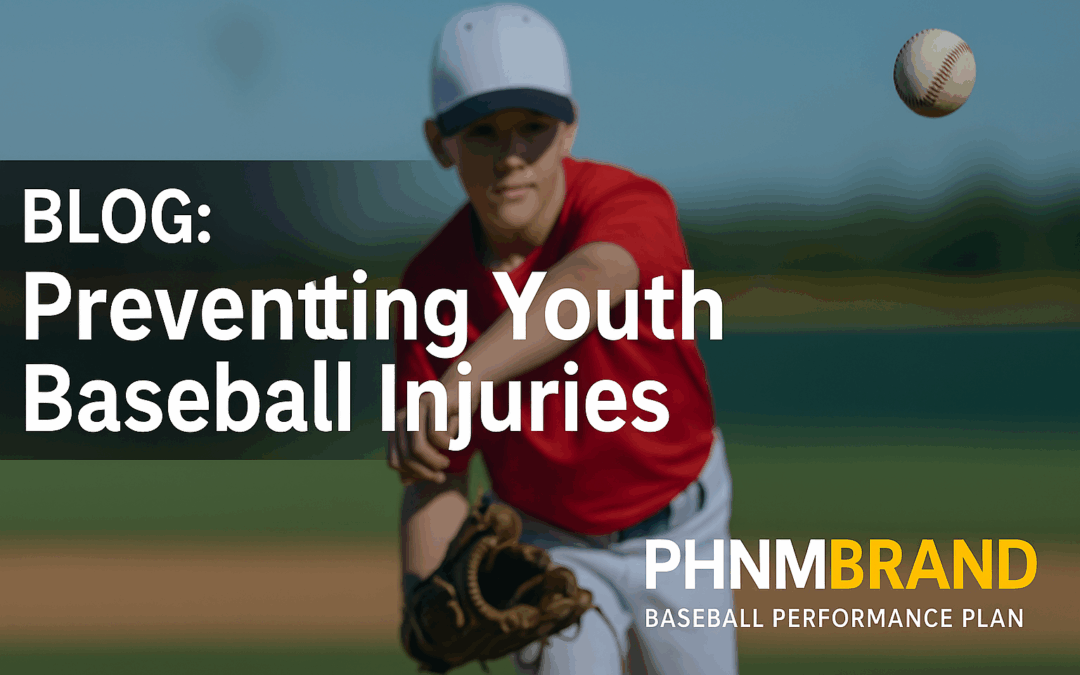⚾ BLOG: Preventing Youth Baseball Injuries
Summer baseball is here and with it comes packed weekends, travel tournaments, long innings, and plenty of heat. With the right program and coaches, summer baseball can be great but it’s also prime time for overuse injuries as kids come off spring season, especially in young athletes who pitch frequently or play on multiple teams.
As a coach, parent, or trainer, your goal should be to help young athletes grow in the game, not break down from it.
Below are 5 essential tips to prevent overuse injuries this summer, plus the key warning signs every parent should watch for.
✅ 1. Don’t Let Summer Ball Become a Throwing Marathon
Summer ball often means a high volume of throws from warmups, bullpens, infield drills, doubleheaders, and tournaments all packed into a short period of time. Reminder: Overuse isn’t just about pitch counts. Every throw counts.
? What to Do:
-
Track all throwing activity, not just pitches
-
Limit extra throwing (like long toss) during heavy weeks
-
Don’t be afraid to pull back, even during tournaments
✅ 2. Schedule Rest Like You Schedule Games
With busy calendars, rest can become an afterthought. Recovery is a key part of development. Without rest, tissue breaks down faster than it rebuilds. This leads to soreness, slower throws, and even serious issues like “Little League Shoulder” or elbow pain. Statistic: 74% of youth baseball players experience throwing arm pain.
? What to Do:
-
1 full day off from throwing each week
-
Prioritize rest after big weekends
-
Support recovery with sleep, hydration, and nutrition
✅ 3. Avoid Playing on Multiple Teams
This is honestly the one is see the most. Many young athletes juggle school ball, travel ball, all-star teams, and tournaments, sometimes all in the same week. The problem? No one tracks total workload. Chasing competition and not development.
That’s how a kid ends up pitching Friday for one team and Sunday for another. I have seen it many times.
? What to Do:
-
Pick one team per season.
-
Find a program where the focus is development and not just competing.
-
Communicate with coaches and make rest non-negotiable
✅ 4. Respect Pitch Counts — Even in Big Games
“Just one more inning”…the battle cry of the injured arm.
Fatigue is the #1 risk factor for injury.
When arms are tired, mechanics fall apart and injuries follow.
? What to Do:
-
Follow age-appropriate pitch count guidelines (look up the Andrews Institute and the Little League pitch count.
-
Never pitch through pain or extended soreness
-
Rotate pitchers regularly to spread out volume
✅ 5. Stick to a Simple Arm Care Routine
Not everyone has access to a strength coach, but every player should have a basic arm care routine, especially during high-volume periods. Feel free to reach out to me if you need a simple arm care routine for your child.
? What to Do:
-
Implement an arm care routine 2-3 times per week. Can be as little as 10-15 minutes of work.
-
Include mobility drills for the hips and thoracic spine pre-game
-
Post-game: stretch, hydrate, and only use ice for swelling or injury
- Again, feel free to reach out if you need any help.
? Signs of Overuse to Watch For
Parents and coaches should look out for the following warning signs:
-
Arm soreness lasting more than 24 hours
-
Elbow, shoulder, or back pain
-
Decreased velocity or poor control
-
Changes in throwing mechanics
-
Avoiding throws or losing interest in playing
Early action prevents long-term damage.
Let’s make this summer a season of:
-
Smart play
-
Healthy arms
-
And great memories
Thanks,
Josh!

